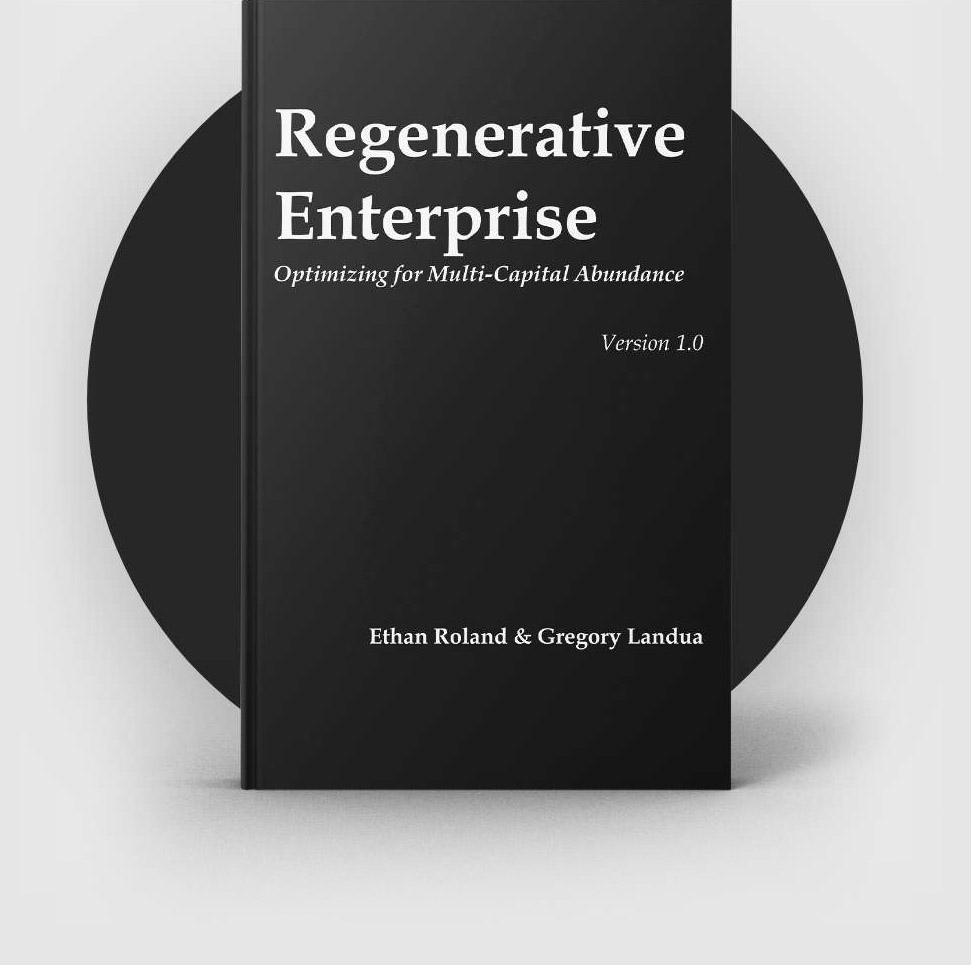The following section articulates one of the three important properties of regenerative systems in the context of the business world and the eight forms of capital.
Harvesting the Surplus vs. Stealing the Core
With an abundance of living, thriving edges and the large number of connections they support, healthy systems begin to generate capital surpluses. In living capital, a tree yields more fruit and seeds than could ever possibly grow into new trees. With intellectual capital, a collaborative team generates more innovations and solutions than can feasibly be put into action. It is these emergent properties and surplus capitals of healthy systems that may be harvested and exchanged in a regenerative economy.
The extractive economy forcibly steals from the core pools of different forms of capital, reducing the ability of the system to maintain itself, much less produce a surplus. This behavior has tended to mine the foundational wealth of living, cultural, social and spiritual capital. Though it does appear to create financial capital profits, it impoverishes any short-, mid- or long-term opportunity for whole-system health.
The current trend to valuate and exchange ecosystem services in terms of financial capital (carbon markets, wetland mitigation banking, etc.) has the potential to go horribly awry. Living capital should only be valued and exchanged on the marketplace to the extent that the capital being traded is a surplus. Otherwise, the same extractive practices will harvest the living core of each locality, preventing regeneration and continued health of the system. Foundational pools of capital must be kept intact – enterprises must never extract more value than can be regenerated within the capacity of the living system itself.
By cultivating capital instead of extracting it, growing the edges of a system, and increasing its internal and external connectivity, enterprises can proactively develop greater surpluses for harvest and exchange.
The forestry enterprise Windhorse Farm in Nova Scotia offers an excellent example of how living capital can be cultivated by regeneratively ‘harvesting the surplus’. Using a management system called Ecoforestry, Windhorse Farm measures the amount that their forest grows on an annual basis, and chooses to only harvest a fixed percentage of that growth. The farm also chooses to harvest slower-growing trees, leaving the best trees to continue growing the living capital of the system. By culling the lowest quality saw-logs, they ensure that the quality of the remaining timber as well as the health of the trees increases each year.
Windhorse Farm continues to cut and sell wood from a forest that has been harvested every year since 1840. They have harvested over 7.5 million board feet of timber, with 2.0 million board feet (and growing!) remaining in the forest. According to the manager James Drescher,
“If this 100-acre lot had been clear cut in 1840, and again in 1890, 1940, and 1990, the total harvest would have been, at most, 5.5 million feet, and the quality of the second, third and fourth harvests would have been much lower than the wood harvested by the annual selection methods. Of course there would be no standing merchantable timber today.”23
By harvesting the surplus living capital developed by regenerative ecoforestry management, Windhorse farm creates true wealth and avoids the extractive processes that dominate today’s business world. We now proceed to define a ‘Regenerative Enterprise’ as a venture that pro-actively grows and cultivates the foundational pools of social, cultural, spiritual, and living capital by providing goods and services in a way that creates net positive gains for the system as a whole.
Excerpt from:
Regenerative Enterprise: Optimizing for Multi-Capital Abundance by Ethan C. Roland & Gregory Landua
23 Drescher, James W. “Enrichment Forestry at Windhorse Farm.” PDF. 2008.
©2013 Ethan C. Roland & Gregory Landua. All Rights Reserved.
